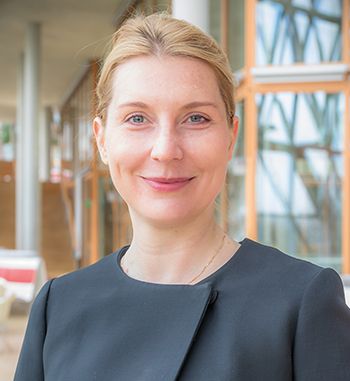![]()
The European Investment Bank is no stranger to using capital markets in delivering strategic aims. The European Union has long pursued Capital Markets Union as an important part of the development of the internal market and the internal market is the instrument the EU uses to realise strategic objectives.
But in 2006/2007, capital markets considerations began to merge with what was to become the most important area of policy in Europe: the fight against climate change.
Inspired by the Berlin Declaration and the Energy Action Plan adopted by the European Union in 2007, the EIB became the issuer of the world’s first ‘use-of-proceeds’ green bond with its inaugural Climate Awareness Bond (CAB). The plan involved scaling up the financings of the bank in the direction of renewable energy and energy efficiency. It was not the only objective of that first deal, however.
“It’s a peculiarity that the strategic component of this deal was actually a capital markets one – it was the first bond to be offered publicly to retail investors in all the EU domestic markets,” said Aldo Romani, EIB’s head of sustainability funding. “But it was at this point that the two areas of policy merged and the question arose as to how to give substance to the link between capital markets and the fight against climate change.”
Sustainable structures
Structural changes were needed to help the market achieve the kind of scale required to mitigate the impact of climate change.
“We had to explain to the capital markets what the bank is doing on the climate side in a more detailed, more transparent and more accountable way,” said Romani.
This process led to the development of two core ideas: a set of definitions that clarifies what is considered eligible for allocations and, secondly, the establishment of the technical infrastructure – in terms of allocation procedures and quality checks, needed to establish the link between the bank’s funding and lending activity. Importantly, this was to be done without relying on back-to-back financing.
“Establishing a reliable link between funding and lending based on the credit merit of the bank rather than individual projects was crucial, as then you can maximise the investor audience,” said EIB’s sustainability funding officer, Dominika Rosolowska. “The greater the transparency and accountability of the lending activities, the more investors you have buying bonds and the larger the volume of bonds that can be issued.”
The link between funding and lending is a necessary pre-requisite for fixed-income investors pursuing ESG strategies.
“When we buy green, social or sustainable bonds, it is important for us that we can be assured our funds are really going to the relevant underlying projects,” said Lars Dreier Kristensen, portfolio manager at ATP. “We need transparency, traceability and credibility at the issuer level so that we can align our own ESG criteria with the bonds that we are buying.”

Strategic alignment
Since its first CAB, the EIB has been busy mainstreaming sustainability into its funding activities, and in September 2018, it reorganised its funding department from a currency-based structure to one along product lines, creating a dedicated sustainability funding team.
The reorganisation followed on from the European Commission adopting its 10-point Action Plan for Financing Sustainable Growth, in March 2018, which aims to leverage financial markets to address sustainability challenges, especially those related to climate change. The plan implemented recommendations based on the EU High-Level Expert Group’s (HLEG) final report that recognised “the priority of establishing a common set of definitions for the classification of the sustainability of economic activities”, said Romani.
A technical expert group on sustainable finance was later established to assist in developing, among other efforts, an EU taxonomy to determine whether an economic activity is environmentally sustainable, an EU green bond standard and guidance to improve corporate disclosure of climate-related information. The first taxonomy comes into force in January 2022, with focus on climate change mitigation and adaptation.
“It was clear that the regulatory framework was taking shape, effectively putting an official institutional value on the things that we had worked on over the years, including early cooperation with China on a common language in green finance,” said Romani. “There was a convergence between the regulatory framework and policy considerations, and this is what led to the EIB’s Climate Bank Roadmap implementation plan.”
In November 2020, the EIB released its roadmap for 2021–2025 aligning its goals with the political ambition behind the European Green Deal and recognising sustainability funding as part of strategic business development.
Over the next five years, the EIB will increase its finance to climate action and environmental sustainability to exceed 50% of its overall new annual lending, and this will be tracked in line with the taxonomy regulation, supporting €1trn of investment by the EIB Group in the decade to 2030. This new level of commitment is designed to accelerate the transition to a climate-neutral, climate-resilient and sustainable economy. All EIB Group financing activities are being aligned to the goals and principles of the Paris Agreement to ensure that all activities do no significant harm to the 1.5 degrees temperature goal and climate resilience goal of the agreement.
“It’s clear that sustainability funding, which is bound to be allocated to lending activities in line with evolving EU legislation on sustainable finance, is a test case for the regulatory framework that is taking shape,” said Rosolowska.

Predictable credibility
Communication and dialogue become an essential component of the strategic approach to the management and development of an evolving regulatory framework because credibility increases if actions are predictable. This is based on a vision for what is going to happen, since, in practical terms, “nobody is in a position to go from zero to 100 in one day”, said Romani. “What you have to do is to adapt, and the sooner you start, the better.”
There is no need to wait for regulation to come into force before behaviour is changed. The EIB is already in the process of progressively aligning its allocations within the framework and logic of the EU taxonomy regulation and that “sends a strong and important message to the market as to what activities are green”, said Kristensen. “Its initiatives are moving the market towards greater standardisation, and that is what is needed to ensure capital is reoriented towards the green transition.”
This article was produced in association with the EIB